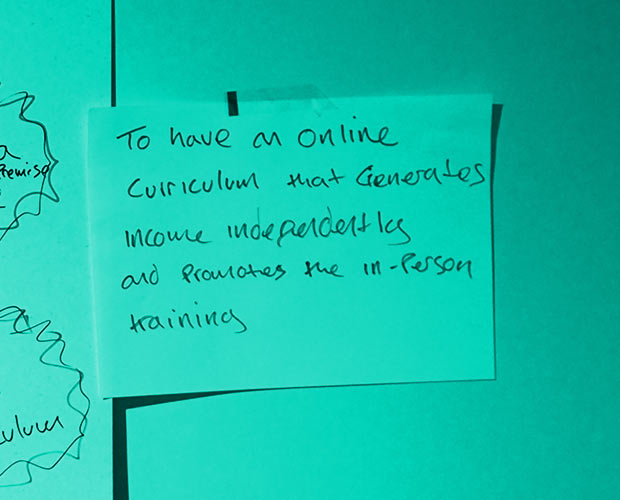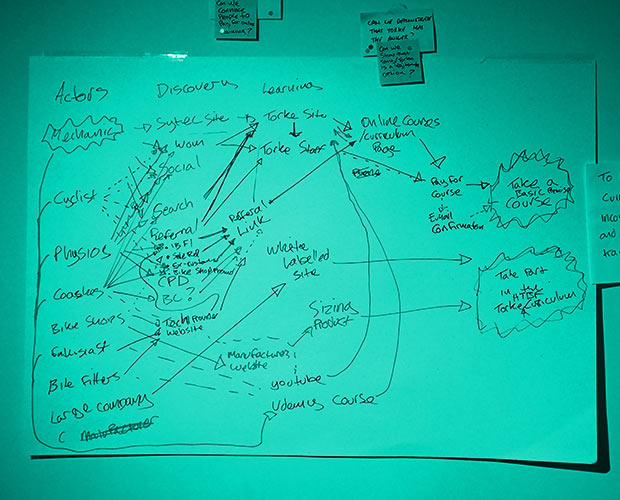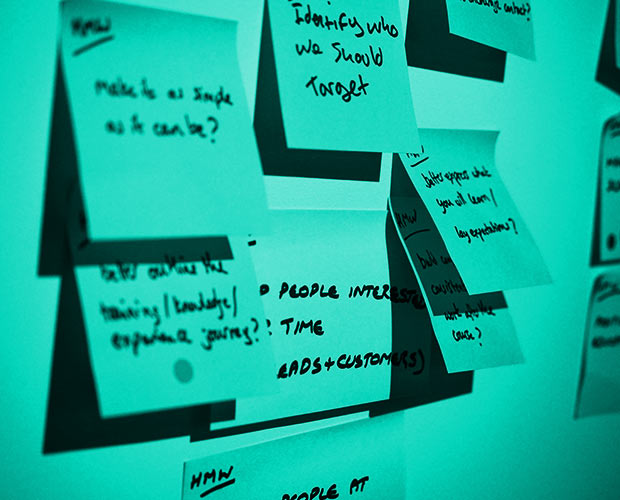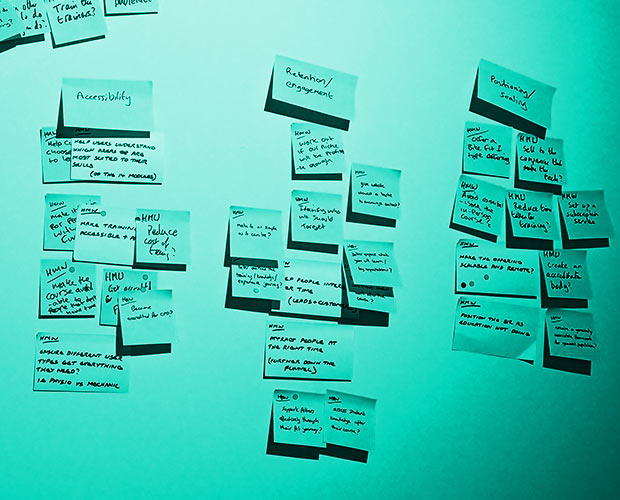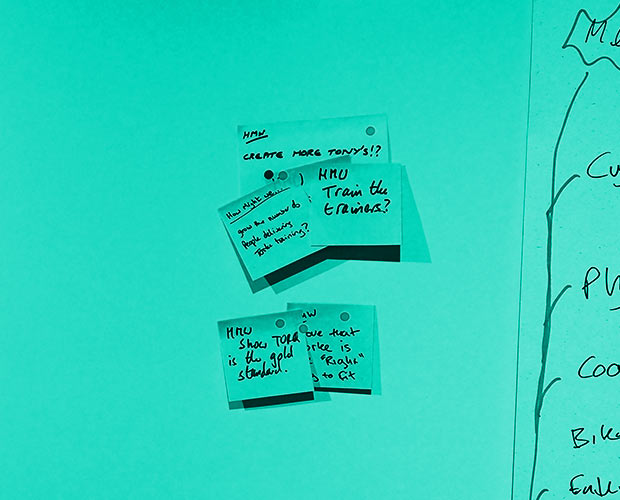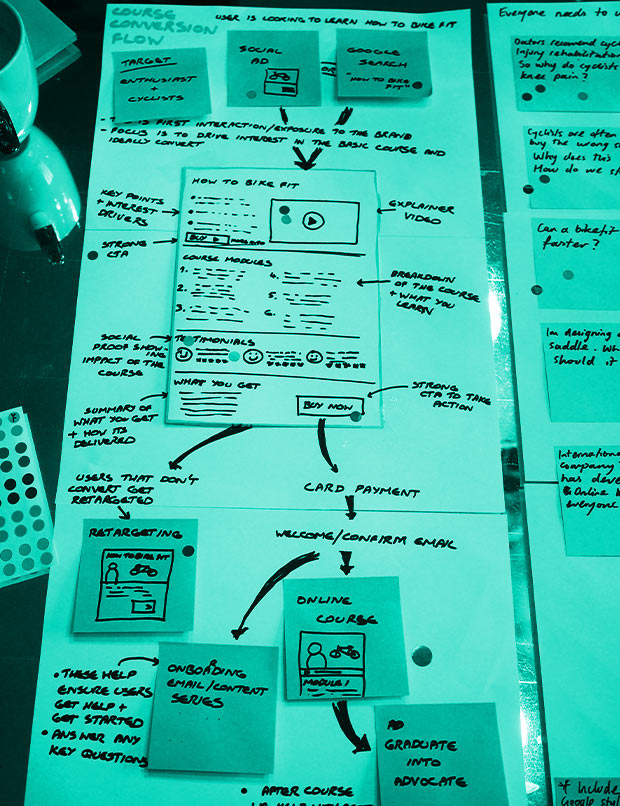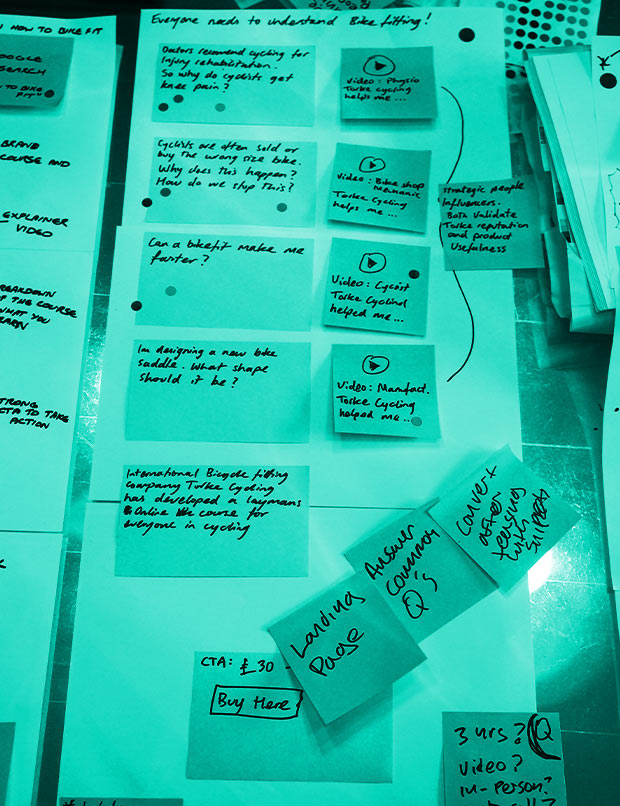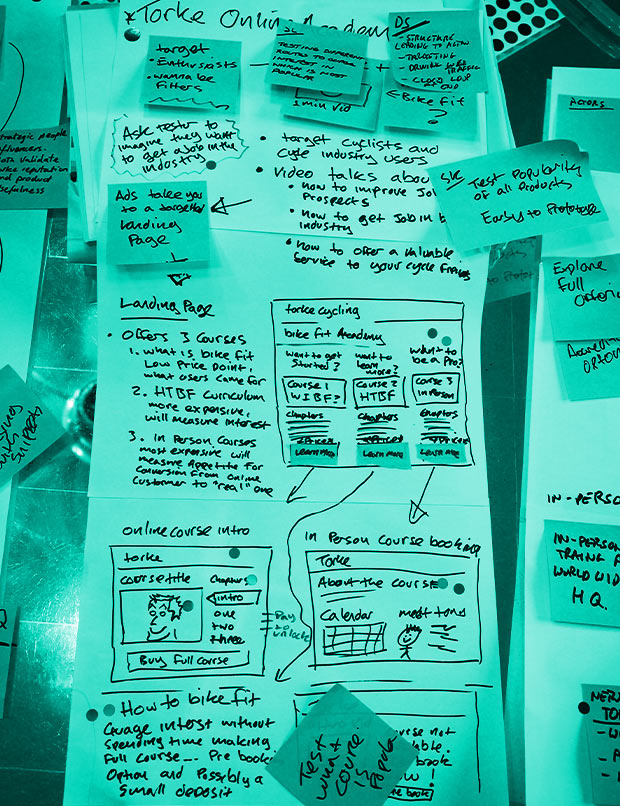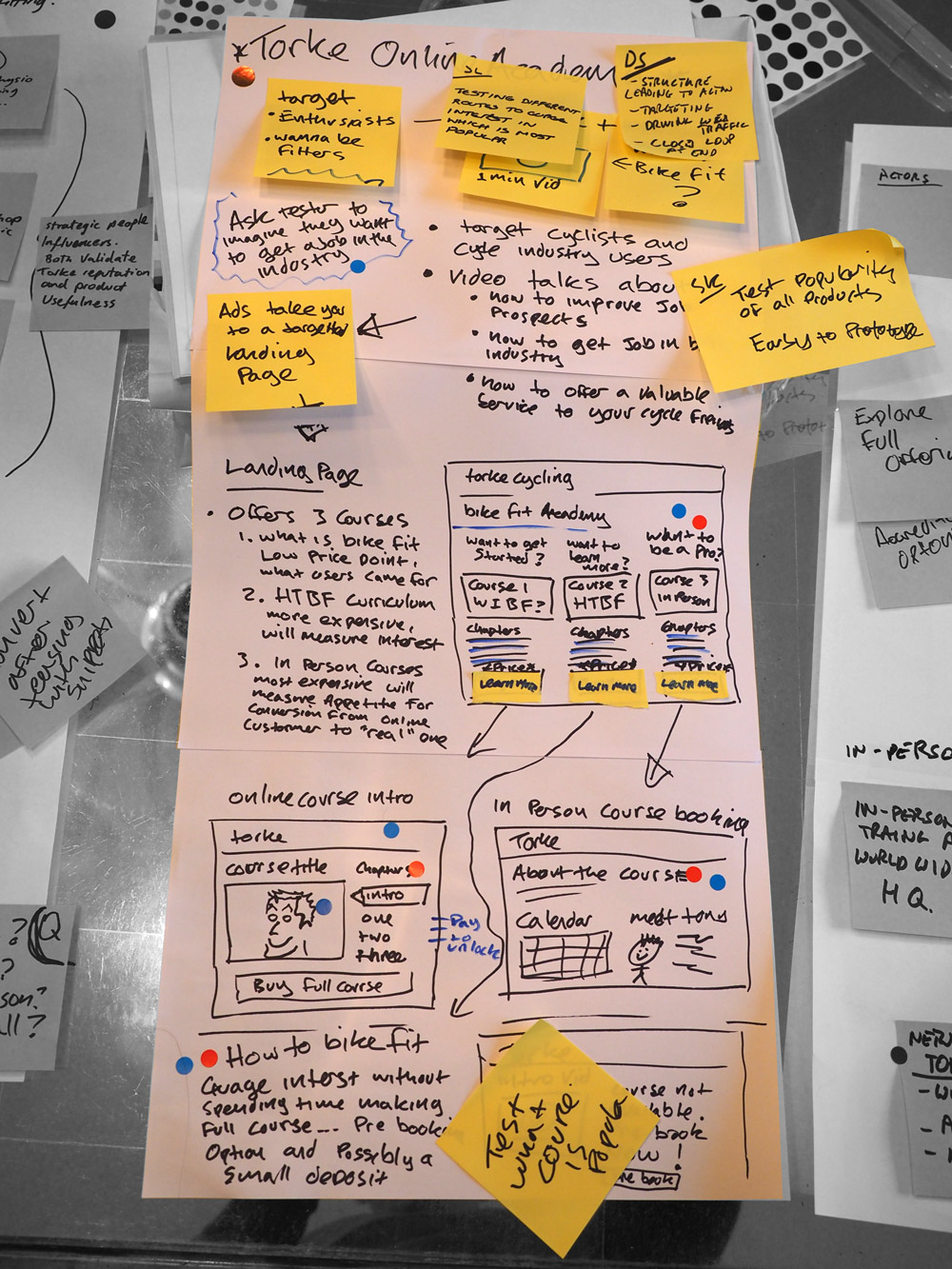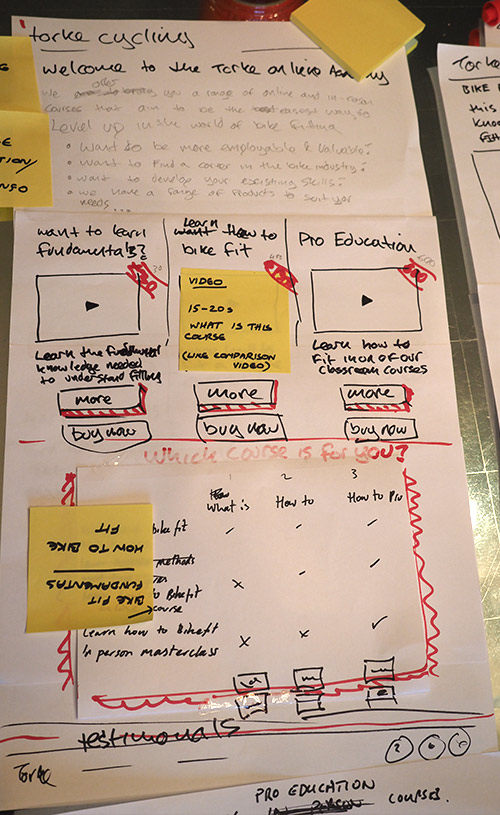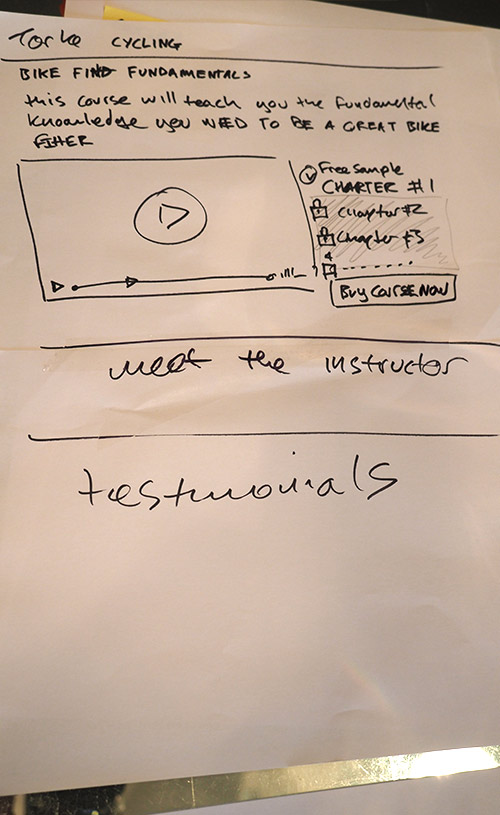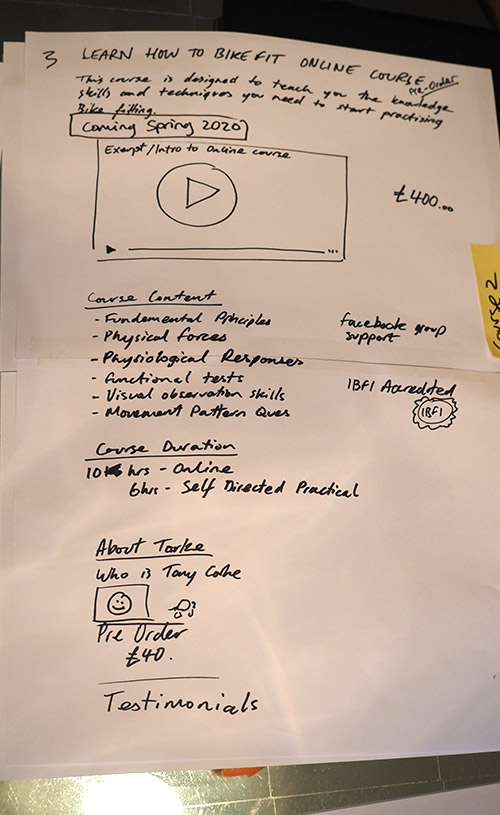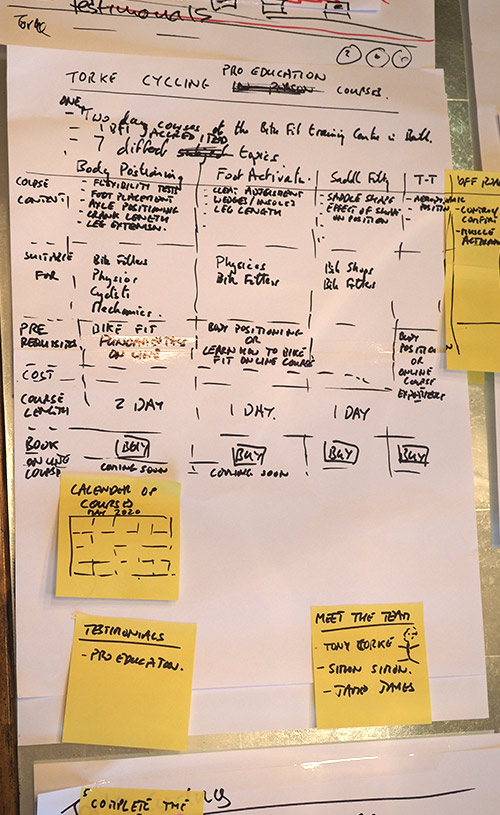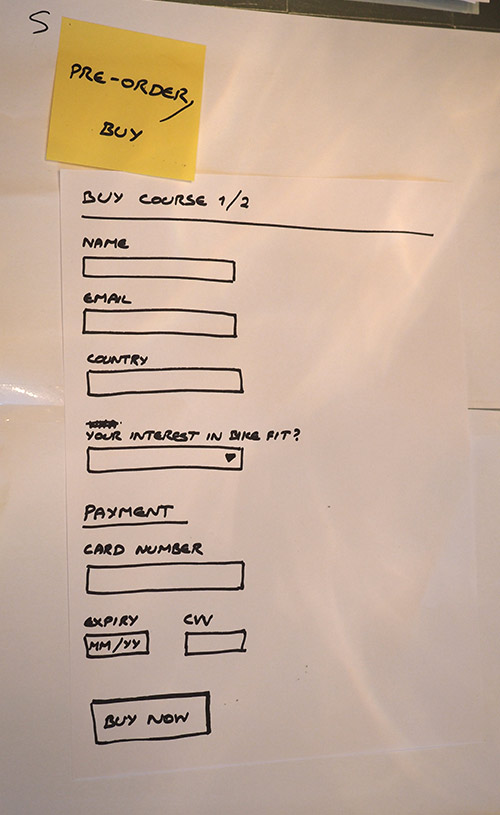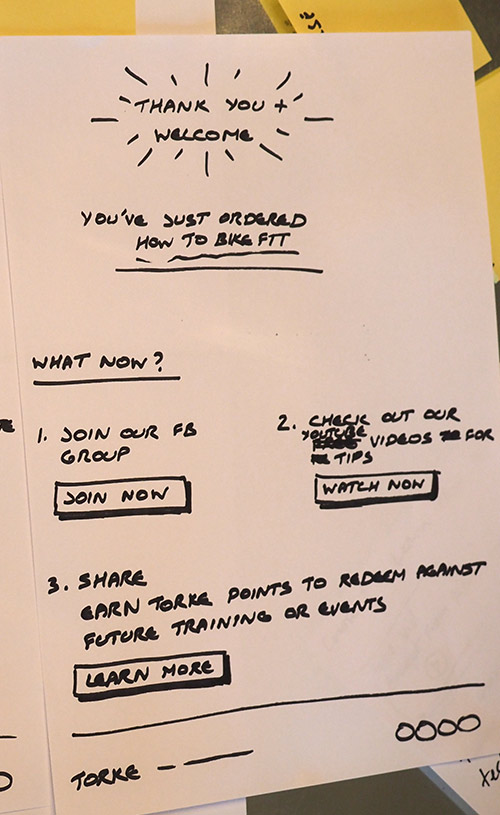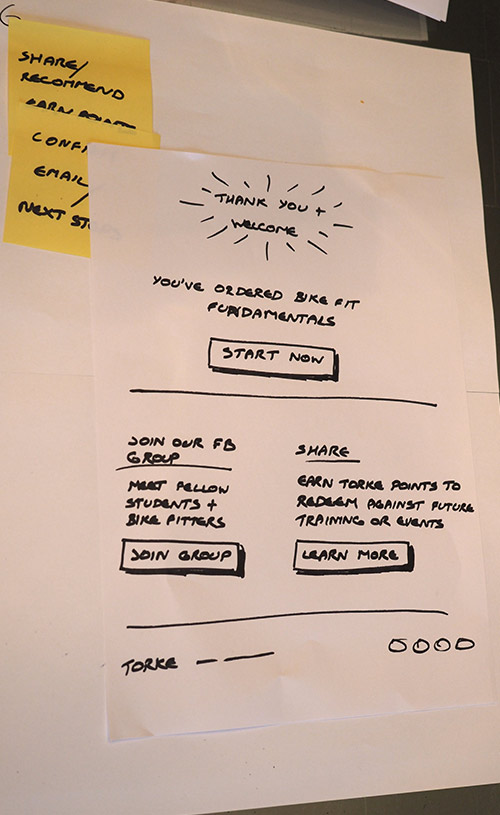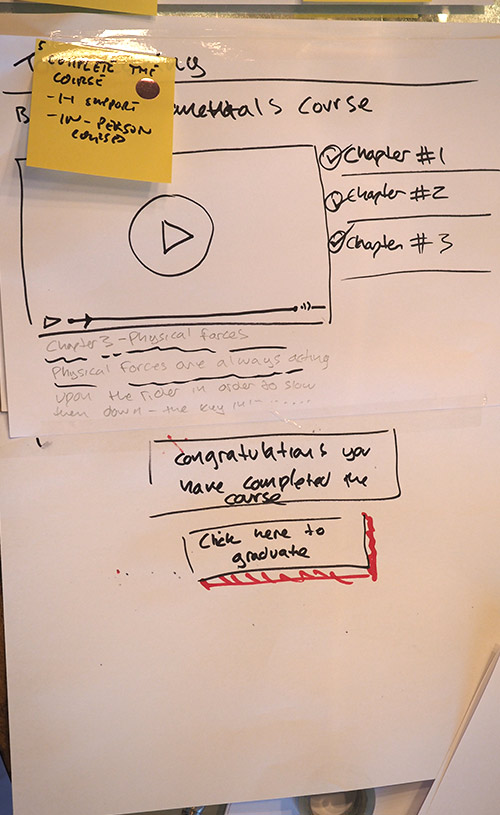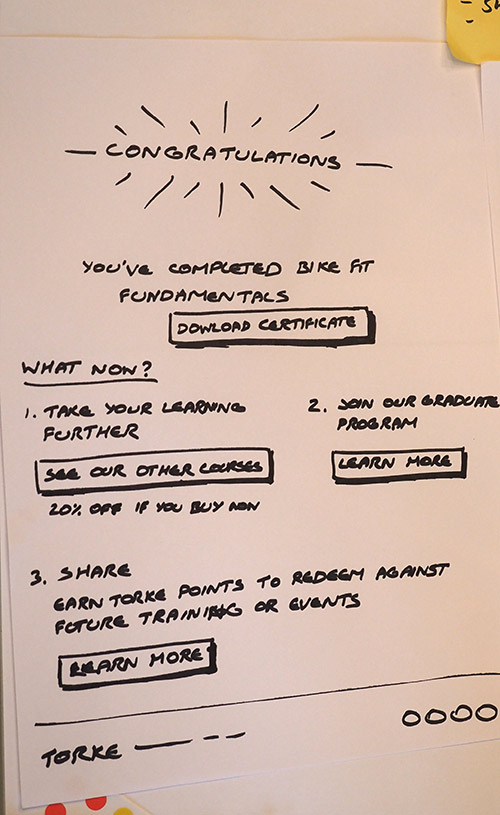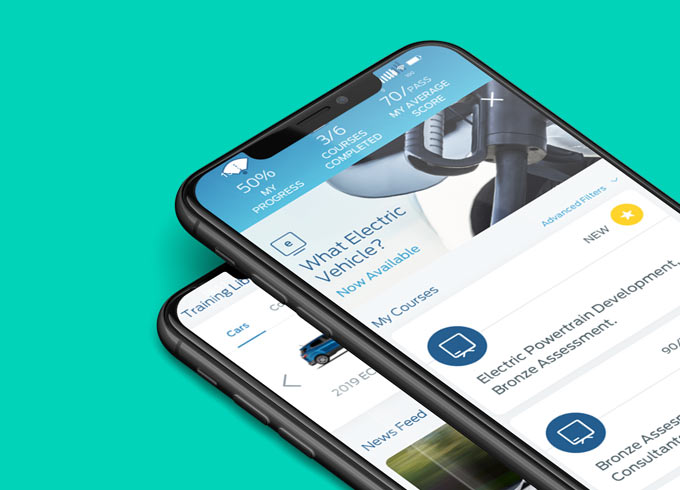Day 1
Discover & Conceptualise
The Morning
The morning of day 1 was spent exploring the Torke Cycling Business, current clients, current problems and ideas for achieving the goal of offering online training as a complementary service to Torke clients.
We used the standard Design Sprint 2.0 format* throughout the sprint so the morning of day one involved our Expert Interviews, Long Term Goals & Sprint Questions and Mapping exercises where we defined the following:
How Might We...
- Make the offering scalable and remote?
- Show that Torke is a legitimate source of training?
- Grow the number of people able to deliver in-person training?
Sprint Questions
- Can we demonstrate the Torke is a legitimate training option?
- Can we convince people to pay for online training?
Long Term Goal
- To have an online curriculum that generates income independently and promotes the in-person training.
Despite the fact that our sprint was meant to focus on delivering a digital training platform, the vast majority of the findings from the morning session highlighted that the main purpose of the project was to legitimise and support the current Torke offering rather than just adding a new revenue stream to the business. This was a really useful insight for designing a solution that wasn't just another off-the-shelf training library.
* If you are unfamiliar with the specific exercises that go into a design sprint, there is a great playlist from AJ&Smart that you can see hereThe Afternoon
The afternoon of day 1 was spent producing solutions. We each spent time looking at existing products that might provide inspiration to us and sketching a concept that we would present to the group the following day, our "pitch" for achieving the Long Term Goal.


